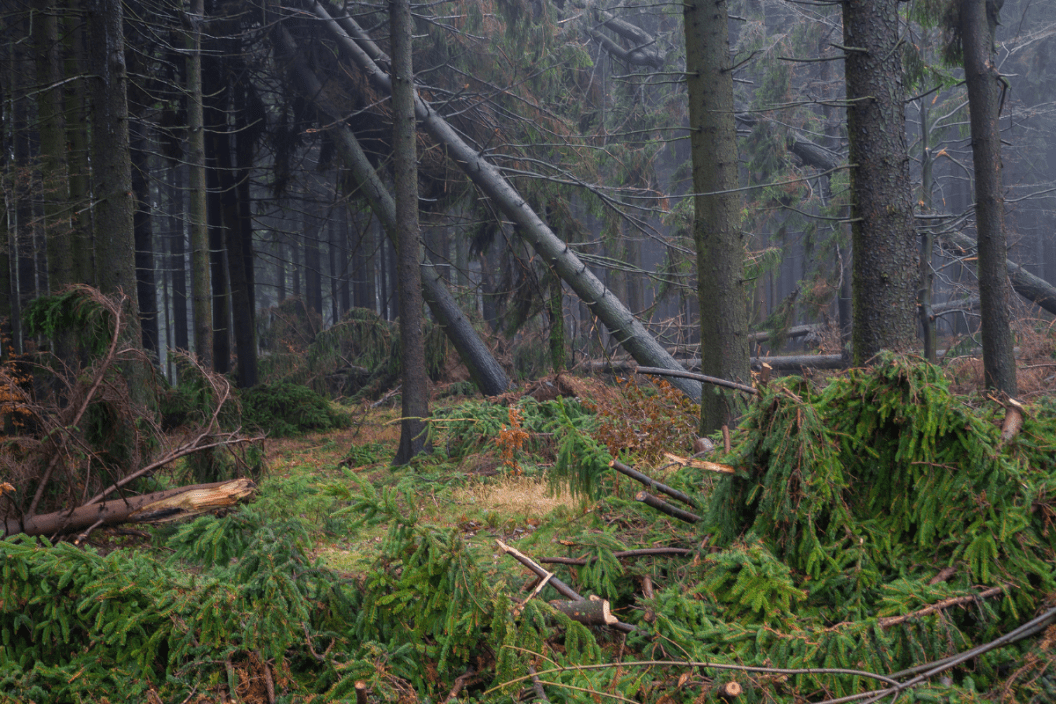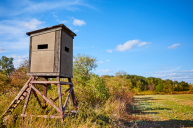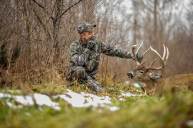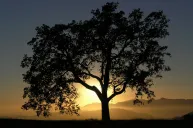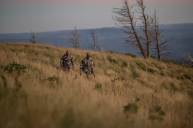Not long ago, we suffered through an EF1 tornado, as the National Weather Service listed it. I didn't even know what that rating indicated, and it was pretty scary once I found out. Thankfully, no one was hurt, but the tree damage alone—its severity and extent—was remarkable. Walking through the woods after that big storm was a lesson in humility. Once-giant trees looked mangled and twisted off, like they'd just come out of a blender. Root balls littered the ground. So many walking paths and deer trails were now impassable. I wondered how the animals in the region would be affected. I also planned to hunt these woods in a few weeks. Would it be worth it? Did the storm ruin my chances?
Through all of this, I had one trail camera set out in the woods. Could I get to it? Did it even survive? I had to wander through the mess of a forest to find out. Luckily, I learned a few things about walking in the woods after a tornado that I can pass along to you. Here are some simple dos and don'ts, as they apply to both basic safety as well as hunting applications.
Do Watch for Hanging Limbs and Broken Trees
Whether you're a woods hiker or someone out scouting for deer, falling branches should be a huge concern, especially soon after the storm hits. Even smaller branches can cause a severe wound if they land on you, and there's no telling how long they will stay up there before they fall. Worse, there can be much larger limbs far up in the canopy that needs very little impetus to come down, which could be devastating.
We saw and heard branches still hitting the ground for days and days after this storm, and it's something that's stuck with us. One huge limb broke off from the exact spot I had walked under just minutes before and came crashing to the ground. When you come that close to having a tree branch fall on your head, it kind of makes you stop and think.
Large trees can get hung up enough that they may stay there for years, but look like they could come crashing down at any moment. These trees are now hazardous and should be given a wide berth. With the right experience and tools, some of these hazards can be taken care of, but it might require some professional help if you aren't armed with a chainsaw and some knowhow.
Don't Climb Treestands Without Checking

Even stands that look like they haven't been affected by the weather can still be dangerous. Inspect them visually and then physically (from the ground) while remaining utterly vigilant for falling parts or debris that might be hanging out of sight. Items like straps, cables, and locks are no match for severe weather and may look strong while being unsafe. Don't start climbing up a ladder until you are sure it is still attached and there is no damage to the tree itself. Even tree steps can come loose in a storm and need surveillance.
Do Suit Up to Clear Paths
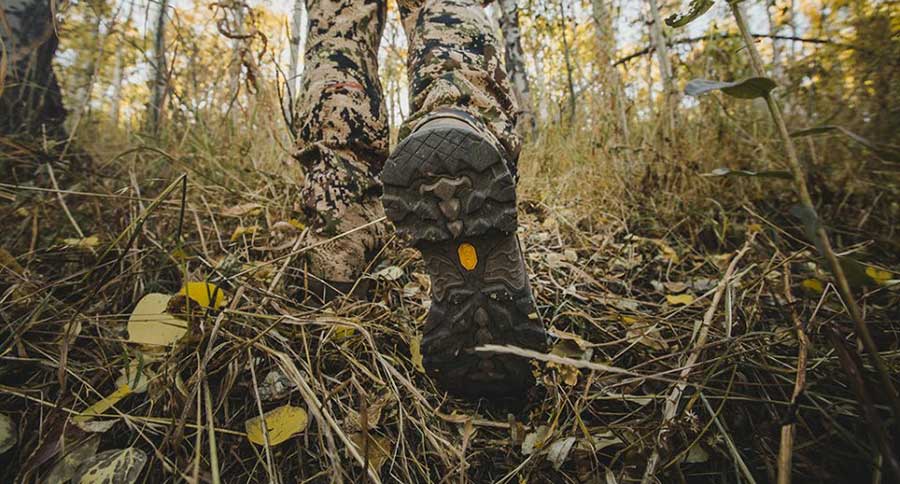
The paths in our woods come in a few forms: human pathways, deer and game trails, low point water drainages, and the like. You may very well need to do damage recon and commit some hard work to clearing, fixing, and adjusting trails as needed. Debris that gets in the way may call for rakes or shovels, but if you aren't far enough removed from hunting season, you might not want to do heavy duty operations on known game animal trails. Too much interference, even beyond the storm, can be enough to spook them, if the bad weather didn't already. And every hunter knows not to leave their scent anywhere they presume a deer or other critter may pass through, so be smart about your concealment.
Don't Assume Your Cabin is Safe
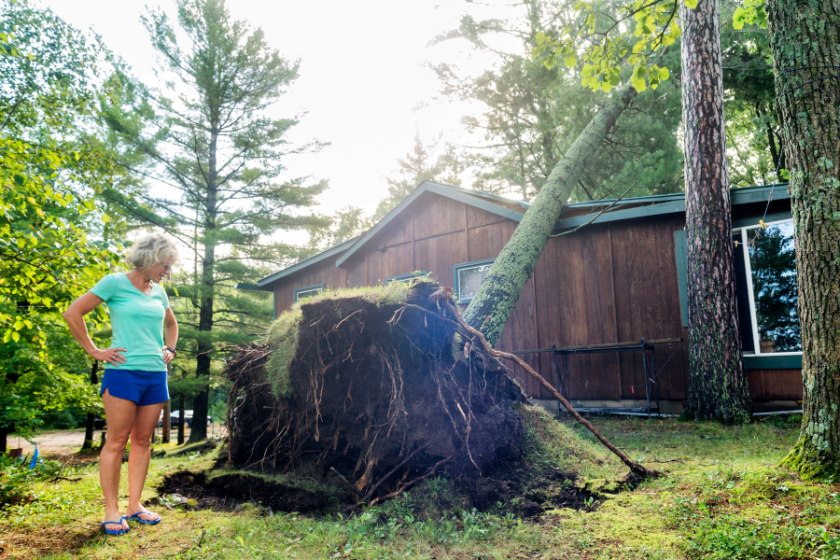
wanderluster via Getty Images
Around my place, several homes and structures are only occupied during certain parts of the year, much like a weekend cabin or hunting camp. There's no sense in waiting to check on the essential things if you have a home or cabin in a place that gets hit while you aren't there. And because you aren't living there full time, it may be harder to detect problems that arose from the storm, like roof leaks or loose siding. Check thoroughly, and see if any potential limbs or trees pose a threat.
Do Take (the Right) Tools
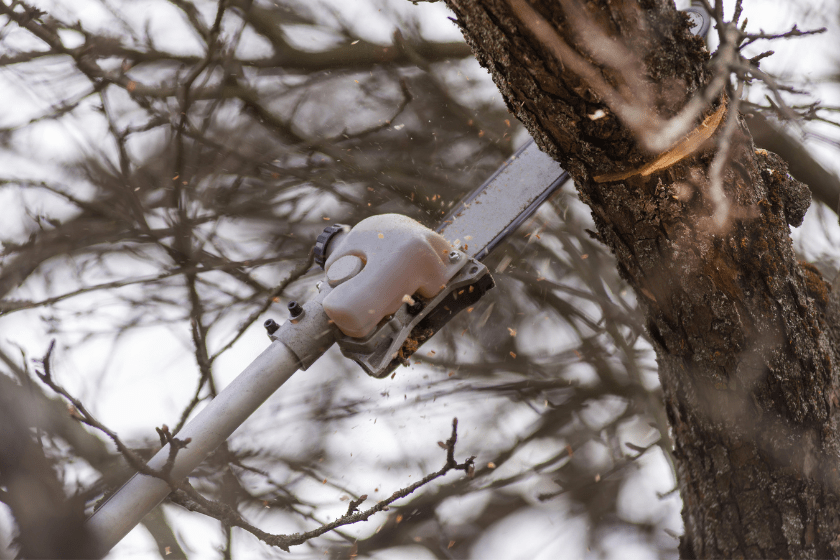
salajean via Getty Images
Pole saws, hand saws, and even smaller, battery-powered chainsaws can be a great help when it comes time to clear things away. Even your average hiker can benefit from carrying a small folding saw; they are compact, easy to carry, and work well in a pinch. A crowbar or digging bar can help leverage things like big rocks and logs that you can roll out of the way. Of course, a chainsaw works best, but only for the well-seasoned and capable.
Don't Go Without a Plan
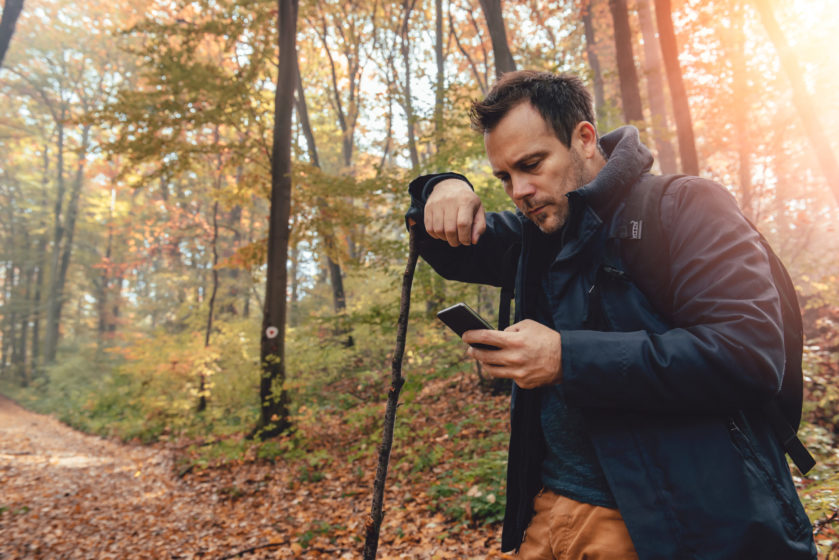
Kerkez via Getty Images
If you're taking a deep hike into woods that were just hit by a storm, know where you're going and when you will return. Then be sure to tell someone your plan, which is equally as essential. This should already be a mantra for hiking, hunting, or fishing trips, but the impact is ratcheted up when walking through a storm-damaged woodlot. Make sure your cell phone is charged, consider taking a radio, carry a first aid kit, and bring plenty of water. Travel early so that you will have the more significant part of the daylight to return, and keep realistic expectations while assessing the damage. If you have to turn back for safety reasons, don't push it and try again later after further settling.
Do Leave Room for New Growth
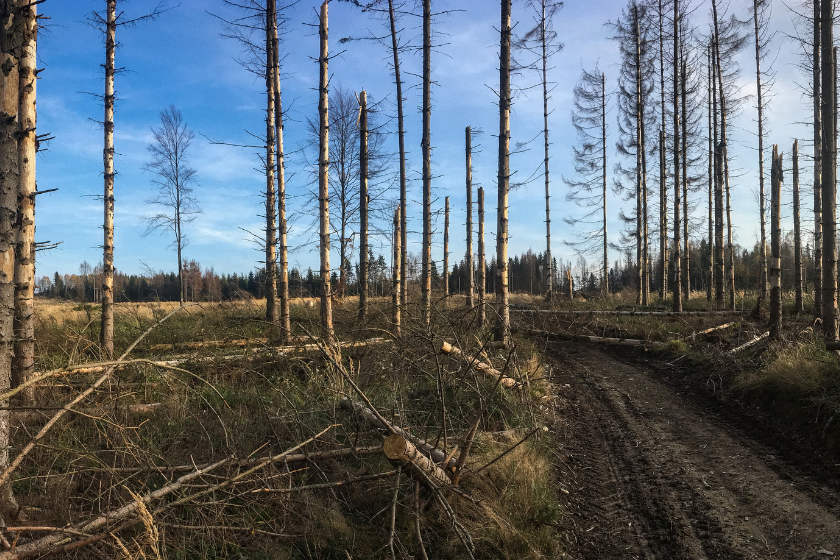
ViktorCap via Getty Images
When assessing a storm's effect and dealing with trail debris, try not to encumber newer, younger trees or other understory as it makes its attempt at regrowth. This regrowth can be a big benefit on the hunting and wildlife management side, especially as it produces forage for game animals and influences new travel corridors. But that's only if the regeneration is allowed to play out. A little forest management goes a long way and can help bring the woods back after they're affected by something as major as a tornado.
Please check out my book "The Hunter's Way" from HarperCollins. Be sure to follow my webpage or on Facebook and YouTube.
